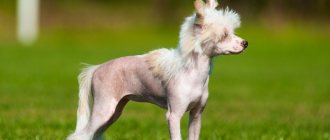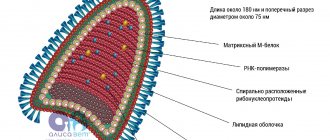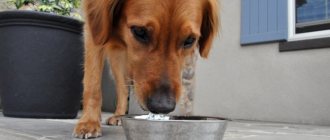SKOR or RKF
Today in Russia there are two large cynological organizations. These are RKF (Russian Cynological Federation) and SKOR (Union of Cynological Organizations of Russia). Their goals are the same, but they are still different from each other.
RKF pedigrees are listed both in Russia and abroad. Four-legged dogs with RKF pedigree can be exhibited and have offspring through any cynological organization.
Whereas dog owners with the SKOR pedigree can be exhibited and have offspring only through SKOR. However, ponytails with the SKOR pedigree can also be exhibited at shows and receive RKF diplomas. But this will require a little effort. In order to be recognized by the RKF, the Skorov tail must pass a test. The test is that the animal must take part in three exhibitions under different experts to determine whether it belongs to the breed. If everything is normal with the dog, the Skorovsky pet receives a registered pedigree, with which it can take part and receive diplomas in RKF exhibitions.
But there is one “But”. Registered pedigree does not give the right to receive the title of Champion. And the offspring of such dogs will not have information about all their ancestors in their registered pedigree. After all, the pedigree count actually begins with his parents. This is why dogs with RKF pedigree are more valued in Russia.
Therefore, if you are going to take part in exhibitions, both Russian and international, then experts advise when choosing a puppy to pay attention to its affiliation with one or another canine organization.
But as for me, it doesn’t matter at all what pedigree of which canine organization your pet has. The main thing is that he is the most loved and the best for you.
For example, when we chose a dog for ourselves, we planned to actively participate in exhibitions. Therefore, when choosing a puppy, we immediately focused on RKF. In his first show, our Dzhekushka received: CAC, Champion of the SS Federation, Best Male, Best Representative of the Breed. But since there was a catastrophic lack of time to participate in further exhibitions, we did not take part in any more exhibitions. In any case, even without these titles, Jekushka would have been our most beloved and most impeccable.
Making a pedigree for a dog is not at all difficult. I will tell you how to arrange everything based on my personal experience of obtaining the RKF pedigree for Dzhekushka.
Veterinary passport
It is a small book of 10-12 pages, each of which contains two columns: date and manipulations performed. Each item entered is certified by the signature of the veterinarian and the seal of the veterinary clinic.
A veterinary passport can be issued at a public or private veterinary clinic, whose specialists will fill it with the necessary information. As a rule, it is issued simultaneously with the first vaccination, so its cost will depend on the type of vaccinations and the place where they were received.
For registration, you will not need any documents except the owner’s passport, the data from which will be entered into the veterinary passport. You will also need to indicate the name and breed of the pet, and the veterinarian will enter the rest of the data. As the dog gets older and new manipulations are performed, you should not forget to update the information in the veterinary passport and ensure that it is correct.
Video from a veterinarian
about document preparation:
International veterinary passport
To obtain permission to take a dog outside of Russia, its owner must obtain an international veterinary passport. It is slightly different in appearance from a regular veterinary passport and contains information in two languages. In addition to standard information, some copies also provide space for pasting a photograph of the dog and recording its physiological parameters. To avoid problems when trying to travel abroad, it is important to check the accuracy of the information and make sure there are no corrections.
Important! Vaccination requirements for dogs vary from country to country, so you should find out in advance what types of vaccinations are required in a particular case.
What is a puppy card
A puppy card (metric) is the first important document in the life of a purebred puppy. By presenting this document, you can already take part in exhibitions, and in the future make a pedigree for the dog. A puppy card is issued on the basis of an inspection report of the puppies by the breeding commission. If, during examination, disqualifying deficiencies are revealed in the baby, the puppy’s metric is marked with o.
Please read about how to choose the right Jack Russell Terrier puppy. And also look at the Jack Russell Terrier dog breed standards.
The puppy card displays information about the puppy's breed, name, and date of birth. Color, gender, brand number are indicated (at the time of purchase, the puppy must be branded). It also contains information about his parents (nicknames and pedigree numbers), information about the breeder (full name and address).
The card must indicate the name of the kennel club that issued the document. The information must be certified by the seal of the club and the signature of the responsible person of the canine organization who inspected the litter.
The puppy metric consists of two parts. When you start registering your pedigree, the upper part of the metric is given to the RKF for exchange, and the lower part remains with you forever. Never throw away this bottom part of the puppy card. Indeed, in case of loss of the pedigree, it will be possible to make it again by presenting only the lower part of the metric.
If, at the time of the exhibition, you gave the upper part of the metric in order to make a pedigree for the dog, then you can also register for participation in the exhibition using the lower part of the puppy. You can take part in exhibitions with a puppy card until the dog reaches 15 months of age.
Modern realities
While we are talking about whether it is possible to make a pedigree for a dog without complying with the necessary documents under ideal conditions. In reality, breeding clubs really want to make a good living. Therefore, matings are registered even several months after the birth of the puppies, they do not pay attention to the lack of exhibition ratings, and sometimes they even issue documents to puppies resulting from incest. This can happen in kennels where dogs of different breeds live or several individuals that are close relatives to each other.
There is only one way to combat this, and that is to carefully choose a breeder. Usually matings are planned in advance, which is announced on a special website. The future owner can already see the parents, if necessary, come and meet them in person, and also leave a request for the kids. The more transparent the better. And, of course, choose big clubs that value their reputation.
At what age do you need to change puppy metrics to pedigree?
If you look closely at the puppy card, you will find a note stating that upon reaching 15 months of age, the puppy's metric becomes invalid. You can exchange puppy records for a pedigree when the puppy is 6 months old and before the dog reaches 15 months of age.
Why only from 6 months? Yes, because before this deadline, the documents for the litter may not yet have time to arrive at the RKF. Well, if you didn’t have time to register the dog’s pedigree during this period of time, you can do it later.
Official receipt of ownership of an animal
Obtaining RKF documents for a dog is regulated by the Civil Code of the Russian Federation (Article 137). In accordance with the law, the acquisition of this property right can occur in one of the possible ways:
- receiving a litter from a female officially owned by a human;
- buying a pet;
- exchange for any item;
- receiving a four-legged friend as a gift or inheritance;
- taking from the street and waiting for a period specified by law.
It is worth noting that all of the above primarily applies to purebred animals, since they can be quite expensive. In some cases, it is possible to apply these methods to outbred puppies and kittens.
Where to register a pedigree for a dog
RKF pedigrees are issued at the main office of the Russian Canine Federation, located in Moscow. Previously, you could exchange a puppy's metric for a pedigree yourself. This method was most accessible to Moscow residents and those who often visit this city. Dog breeders could independently drive up to the office of the Russian Canine Federation, at the address: Moscow, st. Gostinichnaya, 9. There they registered the dog’s pedigree by paying a fee.
Now, both for Muscovites and residents of other cities, there is only one way to exchange metrics for pedigree. To do this, you need to contact any city kennel club or any breeder engaged in such an exchange. You don't have to join your local kennel club to have your documents sent to you. The kennel club will send your documents for registration of the pedigree to Moscow. For such services, the club charges puppy owners a separate fee, which it sets independently. In this case, the dog will be able to make a pedigree no earlier than in 2-3 months.
Is a purebred puppy a puppy with documents?
A puppy that is obtained from purebred parents in compliance with all rules and permits and at the same time fully complies with the standards of its breed without any defects is purebred. The pedigree of a dog as a document speaks about the origin of the dog - its family tree. But with the above, it is important to understand that pedigree does not in any way guarantee the puppy’s working qualities, training, suitability for certain types of service and performance of various tasks. The very concept of a “puppy with documents” speaks of the purity of its breeding line, of its belonging to the breed without any impurities.
How to fill out a puppy's metric correctly
Before sending a puppy card in order to make a pedigree for the dog, it must be filled out correctly. It's not at all difficult to do this. But there are several important points that you need to pay attention to when filling out:
- Fill out the metric legibly, in block letters. If any letter is illegible, it may be incorrectly entered into the pedigree. This will lead to the fact that the pedigree will have to be drawn up again.
- You only need to fill in two fields correctly: owner and address. – In the “owner” column, enter your last name and initials. – In the “address” column we write the registration address indicated in your passport. You must include your postal code. Without an index, your puppy metrics will not be accepted for exchange.
Why do ordinary dog breeders need genealogy?
A pedigree is required, strictly speaking, only to satisfy the ambitions of the owner and his business if, for example, he has organized a nursery and is breeding dogs. He needs a dog not only to give her unconditional love and receive reciprocal tenderness and affection, but also material benefit, a sense of significance.
For ordinary loving owners who have no idea what kind of tribe their favorite is, pedigree is not so important, because love for our smaller brothers is either there or not, and no papers with serious abbreviations and coats of arms will affect this. It is enough to visit the veterinarian regularly and have a basic set of documents. But for owners of purebred individuals, if there are plans for breeding, even if not for business purposes, it is better to take care of obtaining a pedigree.
Happy mongrel dog
How much does a dog's pedigree cost?
How much does it cost to do a pedigree for a dog without taking into account the fee that the kennel club may charge you? You can find out the latest information on the RKF website.
Here is the estimated cost of the pedigree (the price is as of 2015):
- The cost of a regular exchange (15 days): for citizens of the Russian Federation - 1000 rubles, and for foreign citizens - 2750 rubles.
- The cost of urgent exchange (1 day): for citizens of the Russian Federation - 2000 rubles, and for foreign citizens - 3750 rubles.
International veterinary passport
Not many people know what a dog passport looks like and why it is needed. But this document is really important. It contains information about the animal and its owner (including contact details), information about:
- types and timing of vaccine administration;
- preventive and therapeutic measures;
- whether the animal was chipped (the chip number of 15 characters is indicated);
- presence of a brand (to travel to EU countries you need a chip, but a tattoo helps prove the right to a dog, which is why purebred dogs are often branded).
A dog passport is issued immediately after the first vaccine is administered to the puppy, at approximately 1.5-2 months. It also includes the characteristics of the animal, the color of its coat, its size (belonging to a specific breed and nickname are also indicated).
All procedures performed are marked in the passport with special stickers, stamped with the seal of the clinic, the doctor and his signature. The document is submitted to the State Veterinary Service, whose employees are responsible for issuing permits for the removal of dogs from the country.
Important! If, instead of a veterinarian’s stamp, the passport bears the stamp of the club to which the dog belongs, then the document is considered invalid. The dog must receive all vaccinations 1 month before the planned trip. If she has been taken to the veterinarian for a long time (1 year or more), then they first make an appointment with the doctor and undergo an examination, and only after that they decide whether leaving is possible.
Diploma
What does the RKF pedigree look like?
Just like in the puppy metrics, the RKF pedigree contains data on the breed, name and date of birth. It indicates the color, gender, brand number, information about the breeder and owner of the dog. A lot of space is devoted to the puppy's family tree. Pedigree numbers and information about the titles of ancestors are indicated. On the back of an authentic certificate there must be a hologram with an image of a greyhound's head.
Additional terms
In what case can an owner be denied registration of a mating? There are also a lot of reasons here. And the first is the lack of expert assessments. If the dog has a pedigree, and you want to breed it with the best representatives of the class, getting elite puppies, then you need to get the opinion of several experts at exhibitions about its compliance with breed standards. If there haven’t been any entries to the show, club specialists may suspect that your pet has disqualifying traits. This may be the absence of some teeth, cryptorchidism, excessive aggressiveness or fearfulness, or developmental defects.











